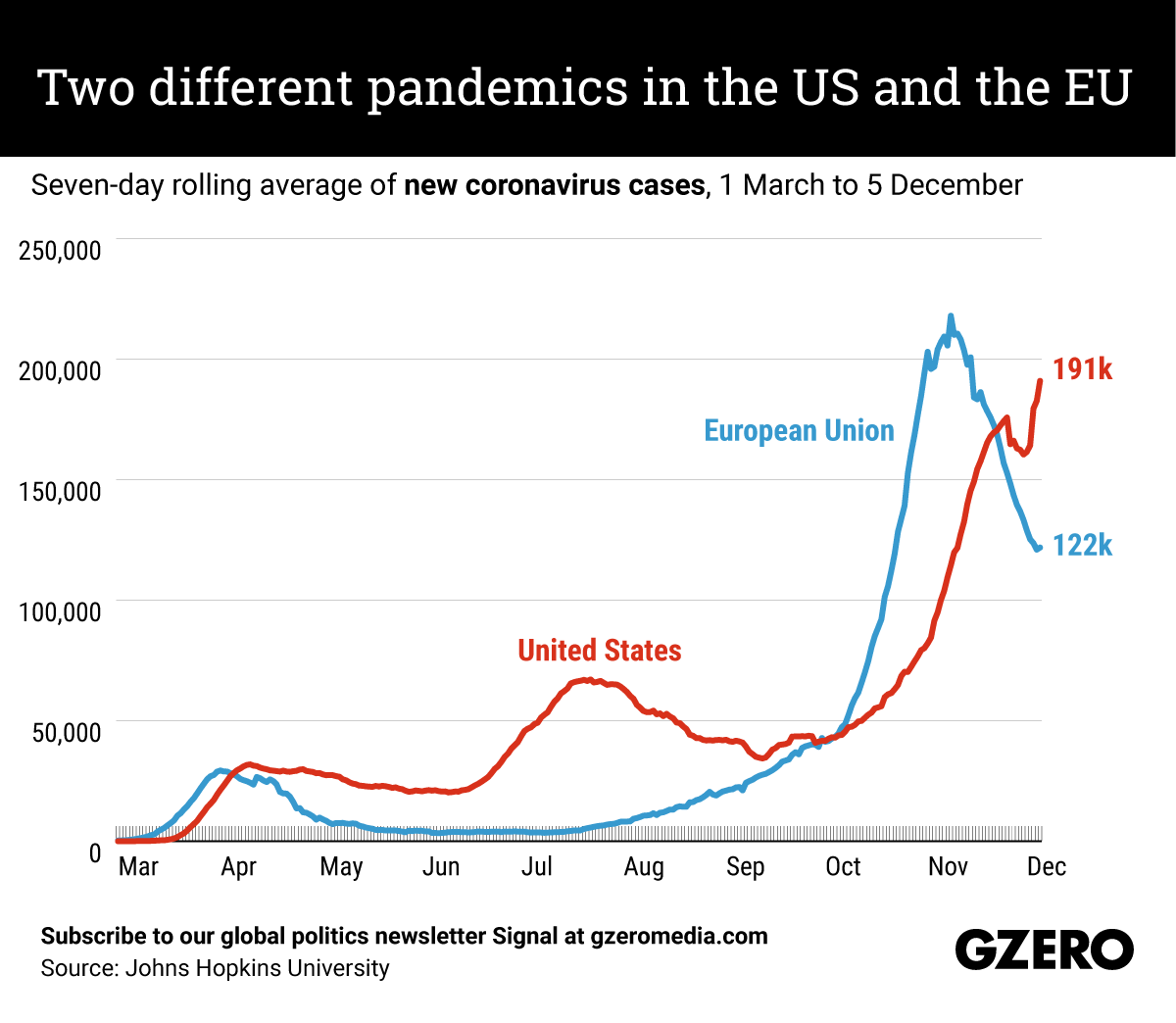December 07, 2020
The United States and the European Union have comparable population sizes, but the trajectories of their COVID-19 outbreaks in recent months have been quite different. The US is experiencing a full-blown third wave of the pandemic, which health experts fear will get even worse after millions of Americans ignored CDC warnings to not visit their families for Thanksgiving. In Europe, strict restrictions have brought down the number of daily cases, but mortality rates are still rising and approaching those of the US. The current situation is a sharp contrast to the disparity seen over the summer, when the US suffered a second wave of cases in the Midwest and South while European countries seemed to have kept the coronavirus (mostly) in check due to stricter adherence to social distancing and mask-wearing. Here's a look at the seven-day rolling average of new COVID-19 cases, and three-day rolling averages of new deaths and new deaths per capita in the EU vs the US since March.
More For You
Global conflict was at a record high in 2025, will 2026 be more peaceful? Ian Bremmer talks with CNN’s Clarissa Ward and Comfort Ero of the International Crisis Group on the GZERO World Podcast.
Most Popular
Think you know what's going on around the world? Here's your chance to prove it.
Indian Prime Minister Narendra Modi isn’t necessarily known as the greatest friend of Muslim people, yet his own government is now seeking to build bridges with Afghanistan’s Islamist leaders, the Taliban.
French President Emmanuel Macron, German Chancellor Friedrich Merz, Ukrainian President Volodymyr Zelenskiy, U.S. Special Envoy Steve Witkoff and businessman Jared Kushner, along with NATO Secretary-General Mark Rutte and otherEuropean leaders, pose for a group photo at the Chancellery in Berlin, Germany, December 15, 2025.
Kay Nietfeld/Pool via REUTERS
The European Union just pulled off something that, a year ago, seemed politically impossible: it froze $247 billion in Russian central bank assets indefinitely, stripping the Kremlin of one of its most reliable pressure points.
© 2025 GZERO Media. All Rights Reserved | A Eurasia Group media company.
